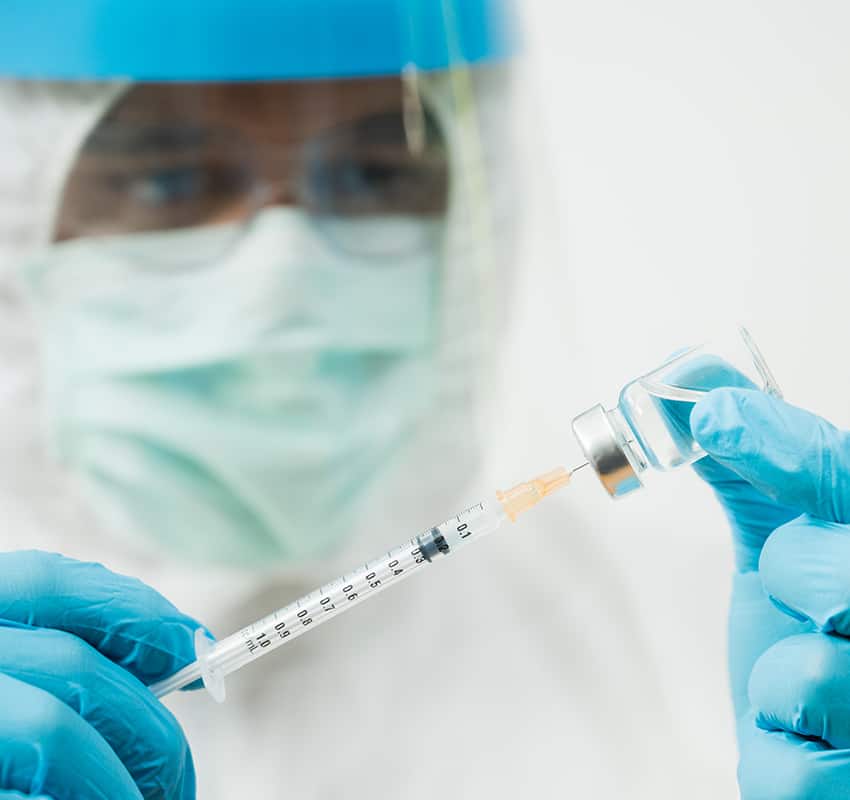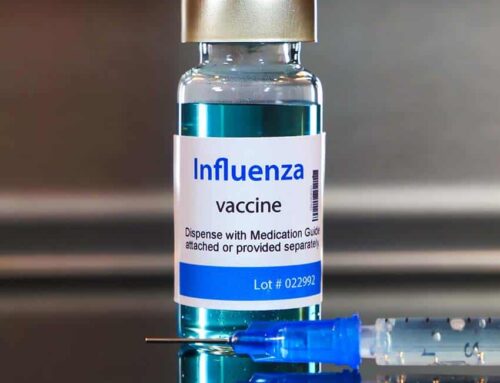Coronavirus Vaccine Advertising
Now that various Coronavirus Vaccines are starting to become available, we can see that governments around the globe are engaging in public health awareness campaigns to encourage citizens to get vaccinated. We expect to see during 2021 a number of Coronavirus Vaccine Advertising campaigns driven by governments at multiple levels and public health groups.
Coronavirus Vaccine Advertising can be a delicate thing. It’s important to target the right demographics that are at the highest risk of COVID-19 complication, offer only correct and proven information, and use positive information to encourage individuals and families to get vaccinated. There can be quite a bit of misinformation on social media– that’s why it’s important for COVID vaccine ad campaigns to be as helpful and effective as possible.
What are the Coronavirus Vaccines?
We’ve seen during 2020 nearly 60 Coronavirus Vaccines developed against severe acute respiratory syndrome Coronavirus 2 (SARS-CoV-2) with many in clinical trials with some vaccines reportedly having more than 90% efficacy against COVID-19 in clinical trials. A handful of vaccines are already in Phase 3 and Phase 4 trials with some given emergency approvals by various governments.
Currently, the most well-known global Coronavirus Vaccines for COVID-19 include:
The Oxford University-AstraZeneca Vaccine
The Oxford University-AstraZeneca Vaccine is a joint venture with Oxford University and the British-Swedish pharmaceutical giant AstraZeneca and is codenamed AZD1222 or ChAdOx1 nCoV-19.
It’s been developed from a weakened version of a common cold virus (known as an adenovirus) and has been modified to look more like Coronavirus – although it can’t cause illness. When the vaccine is injected into a patient, it prompts the immune system to begin making antibodies and primes it to attack any coronavirus infection.
This vaccine is going to be a common one in Europe (UK has bought 100M does) and Australia. It offers a 70% effective rate, which may seem like a downfall. However, it does not need to be stored at extremely low temperatures and can be stored in a normal fridge, making it much easier to distribute. The vaccine is administered in two doses with the second being administered approx 4 to 12 weeks after their first dose. As of writing, no-one who received the Oxford Oxford University-AstraZeneca vaccine was hospitalized or became seriously ill due to Covid.
The Moderna Vaccine
The Moderna COVID-19 Vaccine, codenamed mRNA-1273, is a COVID-19 vaccine developed by Moderna. The Moderna vaccine is a new type of vaccine called an RNA vaccine. It is reported to protect approximately 94.5% of people from COVID-19. The vaccine is administered in two 0.5 mL doses given by intramuscular injection and given four weeks apart.
Pfizer / BioNtech vaccine
The Pfizer-BioNtech vaccine codenamed BNT162b is based on BioNTech’s proprietary mRNA technology and supported by Pfizer’s global vaccine development and manufacturing capabilities and is almost identical to the Moderna vaccine, and any differences between the two are negligible in terms of safety and effectiveness. The only real difference is that Moderna’s vaccine offers a slightly higher dose. The Pfizer vaccine is administered in two doses and approximately three weeks or twenty-one days apart.
The Johnson & Johnson vaccine
Johnson & Johnson is testing a coronavirus vaccine known as JNJ-8436735 or Ad26.COV2.S.
The vaccine added the gene for the coronavirus spike protein to another virus called Adenovirus 26. Adenoviruses are common viruses that typically cause colds or flu-like symptoms. The Johnson & Johnson team used a modified adenovirus that can enter cells but can’t replicate inside them or cause illness. The vaccine comes out of decades of research on adenovirus-based vaccines. In July 2020, the first one was approved for general use — a vaccine for Ebola and they are running clinical trials on adenovirus-based vaccines for other diseases, including H.I.V. and Zika.
Johnson and Johnson’s vaccine has not yet been approved for use (as of writing) However, the prospects of this vaccine are quite exciting. It would only require a single dose, rather than two spaced out doses.
Novavax
The Novavax vaccine, NVX-CoV2373, contains purified pieces of the spike protein of SARS-CoV-2, the virus that causes COVID-19. These proteins are administered with an adjuvant, a molecule that enhances the immune response. The idea is that when this vaccine is administered, the body recognizes its contents as “foreign” and mounts a protective immune response. Novavax’s Vaccine relies on a different mechanism to generate immunity compared to other vaccines.
Spreading Positivity & Soothing Fears
It’s important for media buyers and advertisers to share this information about the current Coronavirus vaccines. Along with this information, it is also important to share information about the safety of these vaccines.
According to a wealth of health professionals and scientists alike, the currently approved vaccines (the Oxford University-AstraZeneca, Pfizer-BioNtech, and Moderna vaccine) are safe for use. There are some statistics out there that have found that up to nearly half of certain demographics are fearful of the possible health effects of the vaccine. This is where positive ad campaigns can make a difference. By providing accurate information from trustworthy sources in the healthcare and science community, much of the fears surrounding the vaccine will likely disappear.
One major concern that many individuals have is the likelihood of the adverse effects of the vaccine on pregnant or nursing women. The CDC released a statement recently that stated how mRNA vaccines work, and how they are doubtful to pose health risks for pregnant individuals. This could be a good selling point in an ad campaign.
Targeting the Right Audiences
Obviously, Coronavirus Vaccine Advertising should be targeted to entire populations over the age of 18 (until there is a vaccine for children). Targeting ideas for Coronavirus Vaccine Advertising Campaigns;
1. 70% Viewability + GeoTargeting
Yes, that’s right… a Spray and Pray tactic (sometimes it works and we think this is a perfect scenario) Just setting up a 70% Viewability targeting tactic together with some sort of Geotargeting ( depending on creative ) will reach a significant volume of people.
2. Individuals over the age of 65
Individuals over the age of 65 and those with preexisting health conditions are at the highest risk for dangerous COVID-19 complications. This trafficking tactic can be executed 3 different ways;
a) Demographic Data Sets (First Party Data or 3rd Party Data)
b) Contextual Target only aimed at 65+ demo
c) Domain Level Targeting
3. Household Decision Makers
A critical audience to target is Household Decision Makers. These are people who are highly likely to be influential in encouraging vaccine participation. These individuals are often the head of their households and care about the safety of their families. Typically, these individuals are women between the ages of 25 and 54 who are the main family decision-makers.
4. Contextual Content Regarding Coronavirus
Healthy Ads started offering Coronavirus Targeting in March 2020 and we’ve had several clients target this type of content. This targeting would reach a wide range of demographics, but ultimately these are people researching, reading, and educating themselves. They might know a patient who is positive for Covid.
5. Vaccine Curious
You’ll notice we didn’t use the phrase here Anti Vaxxer. We don’t think it’s worth specifically targeting the niche audience of Anti Vaxxers because you are highly unlikely to change their views with advertising.
We call this audience “Vaccine Curious” because there are many people who would not hesitate to get the annual flu vaccine, but when it comes specifically to the Coronavirus Vaccine, they are unsure. They want to be educated; they want to understand. Was it developed safely, or was it rushed to market via emergency provisions? How does the vaccine exactly work? Does the vaccine contain a small amount of Coronavirus? Does the Coronavirus Vaccine contain animal ingredients like eggs ? They are all valid questions that this audience wants to learn about.
So how do we reach the Vaccine Curious audience? View contextual targeting specifically regarding these questions and more.
Campaign Activation
Healthy Ads can provide media buyers and advertising agencies the ability to run Coronavirus Vaccine Advertising campaigns to help promote the vaccination process to the general public.
We offer campaign activation across both our Managed Services offering as well as our Programmatic offering. On the Managed Services side, our team can build a media plan to run across our own Publisher Supply and Curated Supply.
For advertisers running with their own Demand Side Platform (DSP), we can setup Deal IDs for your programmatic team to access. We would set this up across both our Managed Supply and Curated Supply for maximum reach.
Irrespective of your preferred method of activation, Healthy Ads can help run your Coronavirus Vaccine Advertising Campaign. Start by downloading our Media Kit.








